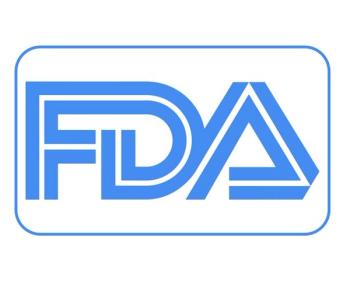
Fremanezumab is Next Migraine Preventive
Fremanezumab shown to be effective in treating acute and episodic migraine, according to a new presentation at PAINWeek 2018.
While anticipating an imminent decision by the Food and Drug Administration (FDA) on the New Drug Application (NDA) of fremanezumab for preventing or reducing episodic and chronic migraine, the manufacturer, Teva, sponsored a presentation of several studies at PAINWeek 2018 in Las Vegas, Nevada, September 4-8, 2018, including a recently completed one-year analysis.
The studies provide new data on long-term response rates, changes in related disability, and requirements for acute medication; as well as assessments of early onset and efficacy in patients with comorbid depression and who had not adequately responded to topiramate or onabotulinumtoxinA.
If approved by the FDA, which could occur shortly after PAINWeek fremanezumab would be the second calcitonin gene-related peptide (CGRP) inhibitor to become available for preventing episodic and chronic migraine headache, after erenumab-aooe (Aimovig, Amgen and Novartis) was approved in May.
Both are monoclonal antibodies targeting the CGRP ligand in the first class of drugs developed to interrupt migraine pathophysiology. OnabotulinumtoxinA was previously approved for preventing chronic migraine, and topiramate has long been used off label, as have a range of pharmaceuticals and "nutraceuticals," but none of these were specifically developed to prevent the onset of this disabling condition.
Long-term impact, early onset
In an interim analysis of a 52-week, multicenter, randomized, double-blind study in 780 patients with episodic migraine that evaluated the long-term safety, tolerability, and efficacy of fremanezumab and assessed related disability, investigators reported a change in mean monthly number of migraine days from baseline to 1 month of -4.6 days for those receiving 225 mg monthly and -4.9 days in the group receiving 675 mg quarterly.
The proportion of patients achieving at least a 50% reduction at month 6 was 61% with monthly dosing and 65% with quarterly dosing. The response at month 6 was maintained through month 12 in those subjects who had completed the 52 weeks at the time of this interim report.
The study, with lead author Jan Brandes, MD, Neuroscience Group, Nashville, Tennessee and colleagues, also assessed change in disability from baseline. The investigators found similar, statistically significant decreases in the Migraine Disability Assessment scores with both monthly and quarterly injections.
"Efficacy and disability from this interim analysis indicated that the level of efficacy observed at month 1 of this study was maintained during the remainder of the study," Brandes and colleagues concluded.
In an interim analysis of a 52-week study with over 1000 patients with chronic migraine, lead author Peter McAllister, MD, New England Institute for Neurology and Headache, Stamford, Connecticut and colleagues found similar response rates to those in patients with episodic migraine and comparable reduction in headache days with both dosage regimens. The investigators applied the Headache Impact Test (HIT-6) to assess disability and reported that scores decreased by 8.1 and 6.9 at month 6 for patients who received 225 mg monthly and 675 mg quarterly, respectively.
"These mean changes from baseline met the established criteria of within-person minimally important difference in HIT-6 scores," McAllister and colleagues indicated.
Brandes and colleagues also reported on studies that had assessed the onset of action relative to placebo in patients with episodic and chronic migraine. They reported significantly greater reductions in monthly average number of migraine days following the first injection of both the monthly and quarterly study drug vs placebo in the patients with episodic and those with chronic migraine.
In patients with episodic migraine, reduction in monthly average migraine days measured at week 1 after the first monthly injection was -0.9 days vs -0.3 days with placebo; and at week 4, -0.9 days vs -0.6 days with placebo. At week 1 after the quarterly injections, there was a reduction of -0.8 days with the study drug vs -0.3 with placebo; and at week 4, -0.8 days vs -0.6 days with placebo.
In patients with chronic migraine, there was also a significantly greater reduction in the number of monthly headache days after the first dose of each regimen relative to placebo. The results reported with both doses in week 1 were -1.1 days vs -0.5 days with placebo; and at week 4, -1.1 days vs -0.7 days with placebo.
For both episodic and chronic migraine headache, Brandes and colleagues concluded: "Onset of action with fremanezumab occurred rapidly for preventive treatment of migraine and significant improvement was maintained for both dosing regimens."
Effective in hard-to-treat patients
Finding that almost 20% of the cohort in a placebo-controlled trial of the quarterly and monthly fremanezumab regimens for chronic migraine had comorbid moderate to moderately severe depression (219/1130 patients), Joshua Cohen, MD, MPH, Teva Pharmaceuticals, Frazer, Pennsylvania and colleagues conducted an analysis of response in this subpopulation over a 12-week study period.
Cohen and colleagues reported that the response in these patients was similar to that of the overall study population, with significant reductions from baseline in the mean number of monthly headache days. These patients experienced a reduction of -5.4 days on quarterly injections and -5.6 days on monthly injections vs -2.2 days with placebo. In addition, they found that active treatment was associated with improvement in depression symptoms from baseline, as measured on the 9-item Patient Health Questionnaire.
In a separate analysis of a subpopulation of 338 patients who had used either onabotulinumtoxinA or topiramate prior to entering the trial of quarterly and monthly fremanezumab regimens, Paul Yeung, MD, MPH, Teva Pharmaceuticals, and colleagues found that these patients demonstrated a significant reduction from baseline in the mean number of monthly headache days.
In those who had entered the trial after inadequate response with onabotulinumtoxinA, the monthly injection was associated with a reduction of -4.1 days vs -2.0 with placebo. In those previously using topiramate, the reductions were -4.4 days with quarterly injections and -4.7 days with monthly injections vs -1.7 with placebo.
"Significant reductions were observed as early as 4 weeks after initiation of treatment for patients who previously used topiramate or onabotulinumtoxinA," Yeung and colleagues reported.
Prevention takes time
In a symposium at PAINWeek on chronic migraine, sponsored by the American Headache Society, Bert Vargas, MD, Associate Professor, Department of Neurology and Neurotherapeutics, UT Southwestern, Dallas, Texas offered guidance on employing preventive interventions.
For the high number of patients with comorbid and concomitant conditions, Vargas recommended maximizing therapeutic opportunities by choosing a single drug with efficacy for both conditions when possible
He noted that while many patients seek out acute relief, few receive preventive therapy. Of these, Vargas indicated, few comply with treatment in the first 3 months or continue treatment for 1 year. It is particularly important, therefore, to individualize medication selection for these patients, Vargas stated. He emphasized the importance of selecting preventive medication based on level of evidence, comorbidities, and side effects.
In addition, Vargas advised, "remind patients it takes time for prevention to work.”
Please click below for access to abstracts of all studies presented at PAINWeek 2018, including the fremenezumab papers discussed in this article:
Newsletter
Enhance your clinical practice with the Patient Care newsletter, offering the latest evidence-based guidelines, diagnostic insights, and treatment strategies for primary care physicians.



















































































































































































































































































